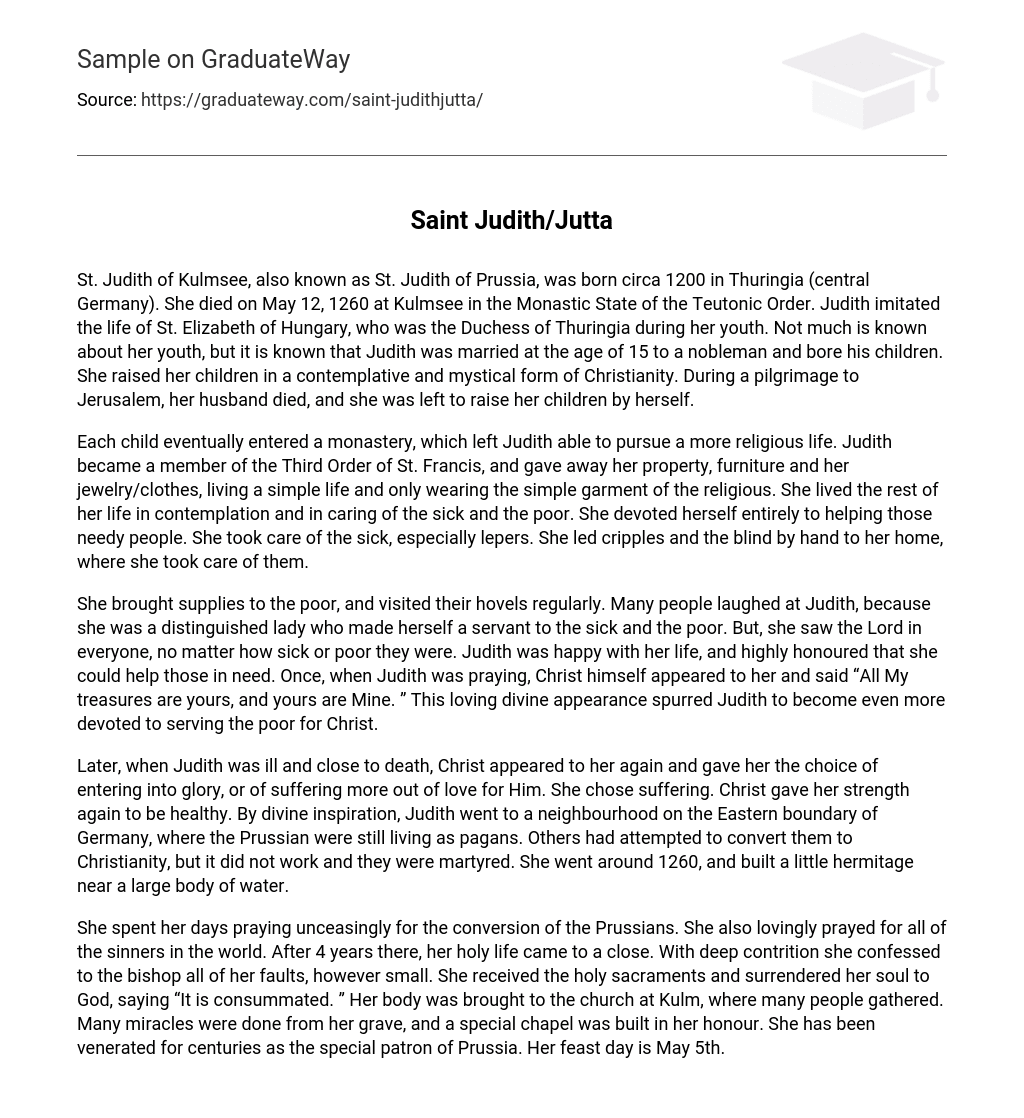St. Judith of Kulmsee, also known as St. Judith of Prussia, was born circa 1200 in Thuringia (central Germany). She died on May 12, 1260 at Kulmsee in the Monastic State of the Teutonic Order. Judith imitated the life of St. Elizabeth of Hungary, who was the Duchess of Thuringia during her youth. Not much is known about her youth, but it is known that Judith was married at the age of 15 to a nobleman and bore his children. She raised her children in a contemplative and mystical form of Christianity. During a pilgrimage to Jerusalem, her husband died, and she was left to raise her children by herself.
Each child eventually entered a monastery, which left Judith able to pursue a more religious life. Judith became a member of the Third Order of St. Francis, and gave away her property, furniture and her jewelry/clothes, living a simple life and only wearing the simple garment of the religious. She lived the rest of her life in contemplation and in caring of the sick and the poor. She devoted herself entirely to helping those needy people. She took care of the sick, especially lepers. She led cripples and the blind by hand to her home, where she took care of them.
She brought supplies to the poor, and visited their hovels regularly. Many people laughed at Judith, because she was a distinguished lady who made herself a servant to the sick and the poor. But, she saw the Lord in everyone, no matter how sick or poor they were. Judith was happy with her life, and highly honoured that she could help those in need. Once, when Judith was praying, Christ himself appeared to her and said “All My treasures are yours, and yours are Mine. ” This loving divine appearance spurred Judith to become even more devoted to serving the poor for Christ.
Later, when Judith was ill and close to death, Christ appeared to her again and gave her the choice of entering into glory, or of suffering more out of love for Him. She chose suffering. Christ gave her strength again to be healthy. By divine inspiration, Judith went to a neighbourhood on the Eastern boundary of Germany, where the Prussian were still living as pagans. Others had attempted to convert them to Christianity, but it did not work and they were martyred. She went around 1260, and built a little hermitage near a large body of water.
She spent her days praying unceasingly for the conversion of the Prussians. She also lovingly prayed for all of the sinners in the world. After 4 years there, her holy life came to a close. With deep contrition she confessed to the bishop all of her faults, however small. She received the holy sacraments and surrendered her soul to God, saying “It is consummated. ” Her body was brought to the church at Kulm, where many people gathered. Many miracles were done from her grave, and a special chapel was built in her honour. She has been venerated for centuries as the special patron of Prussia. Her feast day is May 5th.





